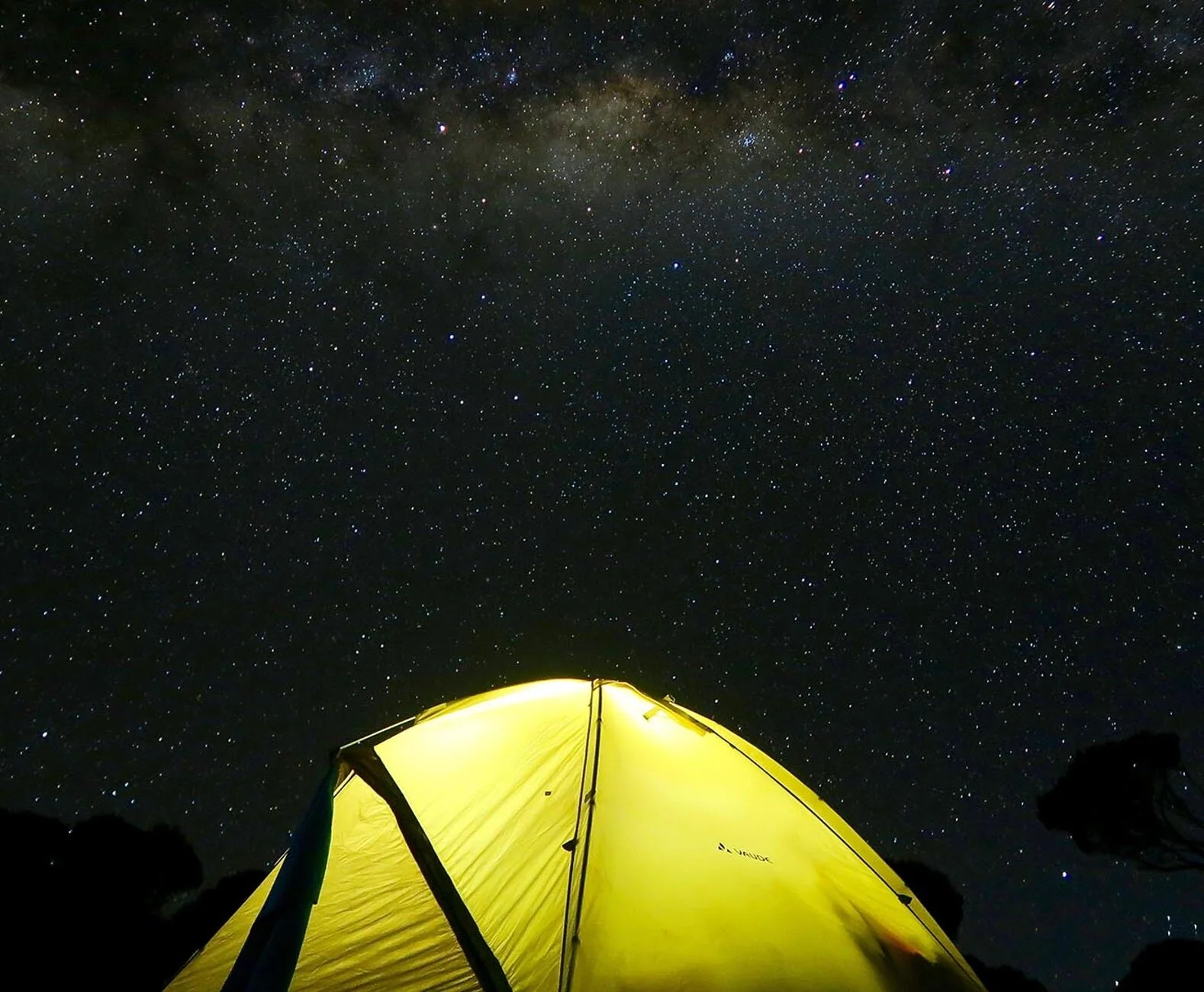Reaching the summit of Mt Kilimanjaro
Reach the top of Africa - traverse the snows of Kilimanjaro to Uhuru Peak.
The lack of light pollution and its placement on the Southern Hemisphere makes Kilimanjaro, and Tanzania generally, an ideal location for stargazing. You’ll enjoy views of the Southern Cross, the third brightest star in the night sky, and Alpha Centauri, the star system closest to our own. You’ll be above the clouds and away from light pollution, so your view of the stars is simply out of this world.
Ideally, your summit attempt enjoys clear skies to witness these views. As typical with any high altitude summit attempt, your final ascent to Uhuru Peak, the highest point in Africa and the top of Kilimanjaro, will start in the middle of the night. A summit attempt during a full moon means more light during your trek, but you’ll see fewer stars than during a dark night.
Your guide will help determine your exact departure time on summit night based on their experience, your pace, and your overall physical condition; departure times are typically at 11 PM or midnight.
You will have a small snack of light food like tea, popcorn, or cookies. We’ll then help you pack at least three liters of water for the final ascent to Uhuru Peak. Many hikers experience extreme dehydration so it is important to have enough water. If you’re having problems carrying your daypack, a guide will help you, so please carry plenty of water. You should turn your water bottles upside down and leave some empty space; this prevents your water from freezing over. You should also insulate your water bottle inside a sock or similar. Please note that Camelbak hoses are notorious for freezing – even if they are insulated and you are diligent about blowing the water back out of the hose – so please bring at least one spare Nalgene of water.
Summit temperatures often drop to minus 30 C. Please plan your gear accordingly. Additionally, strong winds are often experienced on Kilimanjaro’s summit so you must have wind and waterproof outer layers. We recommend wearing four layers on top and three layers on bottom for the Kilimanjaro summit.
The last two hours are admittedly cold, miserable, and exhausting with the thin air and lack of oxygen. You have to keep moving to stay warm, and exhaust your mental stamina to keep going.
Please note that Duma Explorer follows a turnaround policy for summiting Kilimanjaro. If you are not at the summit by at least 10 AM, we will turn you around. This time is variable, and the decision will be made by Duma’s head guide. Your safety and our staff’s safety are a top priority; we ask that you respect and heed our guides’ experience and recommendations.
You’ll need to bring your own energy snacks (gel, gu) for the final ascent as these items are not available in Tanzania. We recommend bringing two Power Bars per person for each day of hiking and four gel/gu shots per person for the summit ascent. If you have poor circulation, please bring hand/foot warmers for your gloves and shoes.
If you are too sick to continue or you are having health problems during the final ascent, please inform our guides immediately so they can assist you. If you need to descend before reaching the summit, an assistant guide will accompany you back to lower altitudes. We are in regular phone contact with our guides during the climb and can arrange a rescue if necessary. Duma Explorer does not cover hotel or food expenses should you have to come off the mountain early.
We will provide lunch for you when we pick you up at the gate. You will arrive in Arusha at approximately 2 PM on your final day, depending on your rate of descent.


